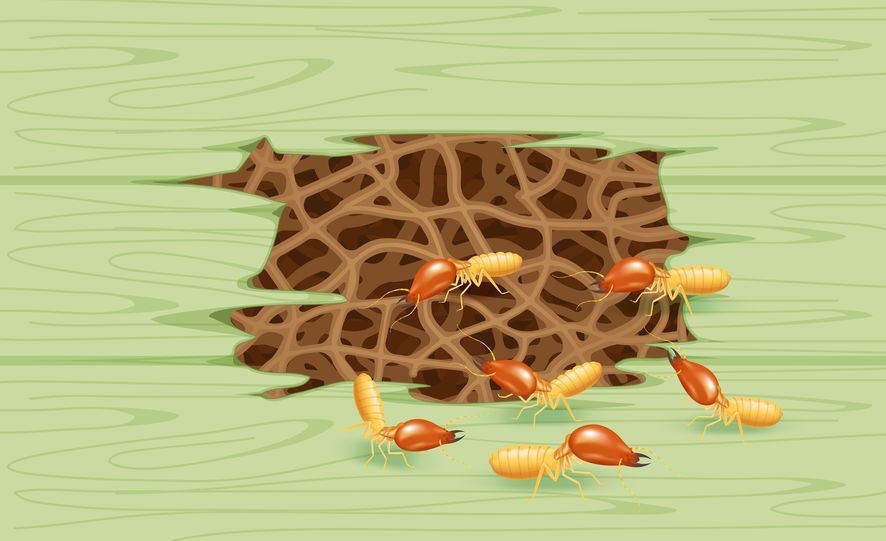With over 2,000 known termite species in the world, only three main groups are a threat to homeowners in the US. These groups include the subterranean, drywood and dampwood termites. Let’s take a look at each of them, their characteristics and the threat that they pose to our homes.
Subterranean termites
Subterranean termites are spread through all the states of the US, with the exception of Alaska. These termites will build massive colonies underground, and then send out worker-scouts to find wood to consume. The colonies can reach up to two million members, which means that these termites can cause the most damage, the fastest, making them the most destructive termite species in the US. Control methods that are effective against subterranean termites include chemical barriers and baiting systems.
Drywood termites
Drywood termites prefer to infest wood that has low moisture content. They will also build their colonies inside the wood that they eat, which makes them quite different from their subterranean cousins, in that they are able to infest wood that is completely removed from the ground. Drywood termite colonies start exclusively with swarmers, which are winged reproductive termites that fly around looking for new wood to build their nests in.
Drywood termite infestations are usually lighter and slower to spread, but once they are spread throughout the home, they are the most expensive species to treat. Small infestations will usually be treated with localized treatments that are cheap and easy to implement, but large infestations will require tenting and fumigation, which is expensive and takes a few days, a period in which the home has to be vacated.
Dampwood termites
Dampwood termites are mostly similar to drywood termites, but they prefer wood that is high in moisture content, rather than wood that is dry. Their infestations are generally small, so localized treatments will be most commonly used to deal with them, but there are situations in which a colony spreads throughout the drier wood of the home, and a fumigation is needed.
If you suspect that you have a termite infestation, it’s best to act fast and schedule an appointment with a pest control company. A professional will come over and perform an inspection to figure out the extent of the infestation and the species involved. If you would like to know more about the various termite species, or if you have noticed the signs of a termite infestation, contact us today.

